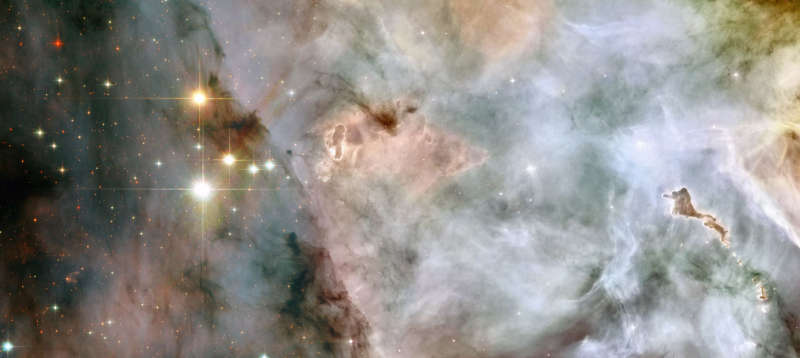Massive Stars Resolved in the Carina Nebula

Explanation:
How massive can stars be?
Big, hefty stars live short violent lives that can profoundly affect their environments.
Isolating a massive star can be problematic, however, since what seems to be a single
bright star might
actually turn out to be
several stars close together.
Such was the case for two of the brightest objects visible in the
open star cluster
Trumpler 16, located in the southern
Carina Nebula.
Upon close inspection by the
Hubble Space Telescope,
WR 25,
the brightest object in the
above image, was confirmed to consist of at least two separate stars.
Additionally, Tr16 -244, just to the upper right of
WR 25, was resolved for the first time to be at least three individual stars.
Even so, the brightest star in
WR 25 appears to be about 50 times the mass of our Sun, making it one of the
more massive stars known.
Winds from these stars are likely significant contributers to the
large bubble that the star cluster sits in.
The
Carina Nebula, home to unusually shaped
dust clouds and the famous
variable star
Eta Carina, lies about 7,500
light years
away toward the constellation of
Ship's Keel (
Carina).
Authors & editors:
Robert Nemiroff
(MTU) &
Jerry Bonnell
(USRA)
NASA Web Site Statements, Warnings,
and Disclaimers
NASA Official: Jay Norris.
Specific
rights apply.
A service of:
LHEA at
NASA /
GSFC
& Michigan Tech. U.

